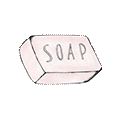#TheWorkIssue
Let's Talk
FIVE ENTREPRENEURS YOU SHOULD KNOW
// Have a look, future is female
INTERVIEWS BY FEDERICA CIUCI PRIORI
For our #TheWorkIssue we picked 5 brilliants, beautiful young women who,
with their determination and passion,
believed in their ideas and found a way to make them real.
Five incredible talents in the design, art, music, hi tech and enogastronomy field
who established their businesses and continue achieving goals
with their sacrifices and satisfactions.
Have a look, future is female.
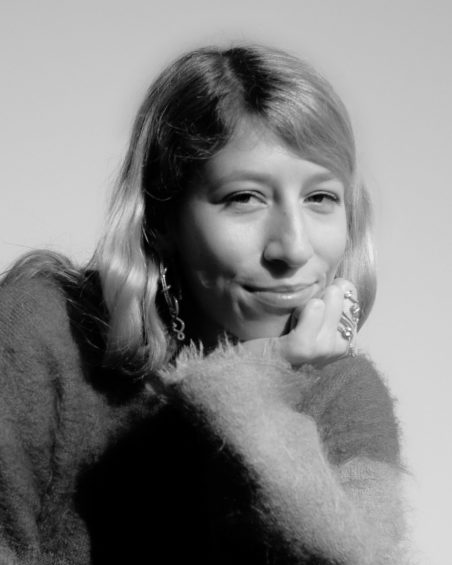
BEA BONGIASCA
Founder and designer of her eponymous label
Bea Bongiasca founded her own jewelry line inspired from her fascination
with East Asia and by her personal experiences she had while visiting these regions. She incorporates the visual language and knowledge she gained
during her travels with her deep passion for pop culture and her western flair.
Bea has done exhibitions at The Art Basel and MiArt, won the first
“Premio Giovani Imprese – Believing in the Future” for the Jewellery
category sponsored by Fondazione Altagamma and, in January 2017,
was named in the Arts & Dorm Room Founders categories in
Forbes’ second annual “30 Under 30 Europe class of 2017” list.
This talented Italian girl have also done collaborations with
Toilet Paper and YOOX and her pieces are currently being sold in
Colette, 10 Corso Como and Opening Ceremony.
Bea is 27 years old.
Federica. Tell us a bit about you. How did you get where you are now?
Bea. I graduated with honours in 2013 at the Jewellery design BA at
Central Saint Martins in London and I started my own brand that same year.
At the beginning of my studies I was thinking about going into sculpture, then I
figured that the jewellery universe was more educational, methodical and binding. And
it is a kind of micro-sculpture in the end! After many internships – one of them in a paddy
in Ubud, Bali, smart me – I decided to come back to Italy and start my jewellery line.
It took me one year to create the start up and I chose Pesaro as a production center since
the factory’s owner is a former goldsmith, very patient with me and always ready to try
new things.
Federica. When did you find out you wanted to be a jewelry designer?
Bea. I always knew I wanted to do something creative. During high school I
experimented various phases in jewels creation but it was only in London that I
finally understood I really wanted to undertake this career. And here I am.
Federica. What was your most important goal?
Bea. They were actually two. The most recent and clamorous one was the nomination
in Arts & Dorm Room Founders categories in Forbes’, the second annual “30 Under
30 Europe class of 2017” list. It was a great experience, I flew to London with my mom
and Martina, my collaborator, without knowing that I would have won for my category,
such an emotion. Another very important goal was exposing, at only 23, with Galleria Antonella Villanova at the Art Basel in Miami. For that occasion I especially designed
a new line called HAPPY GO-COLA: inspired from kawaii – cute and cuddly –
it was based on the idea of momentarily deep the person in the jewel she was wearing.
The object becomes an instrument to escape reality and make it better, making you feel better.
Exactly like Kawaii has been invented in Japan after the second world war, helping the population through positive images to rehab from the traumas they suffered.
Federica. Describe your brand in 3 words.
Bea. Colourful, pop and ironical.
Federica. Who are the women wearing your jewels?
Bea. All of them. I dream of meeting unknown women from every age on
the streets and seeing them wearing my creations. Jewels must be democratic.
Federica. What were the difficulties you encountered when
opening your own business?
Bea. Everything practical concerning the opening of a new activity!
Bureaucracy, taxes, legal affairs… precious materials licensing and so on.
Federica. What does beauty mean to you?
Bea. Pure aesthetic harmony, something you wouldn’t exchange for anything
else in the world.
Federica. As an independent female owner, what advice would you
share with every girl interested in starting her own business?
Bea. It may seem predictable as an answer but I would say finding the budget and
some investors believing in your project. I initially started doing very oriental designs and
then I found out that it wasn’t really what buyers were looking for. Then I professionally
grew and I learned to find a way to manage my creativity, artistic coherence and market
needs to allow my brand to economically grow.
Federica. Which are your main artistic references?
Bea. The union between East and West, photographers like Araki and David
LaChapelle, the surrealist american pop, California and every artist mixing social
with pop. This is exactly what is happening now: a social friendly kind of pop.
Portrait by Alessio Costantino.
Meet Bea here and discover her jewelry line here.
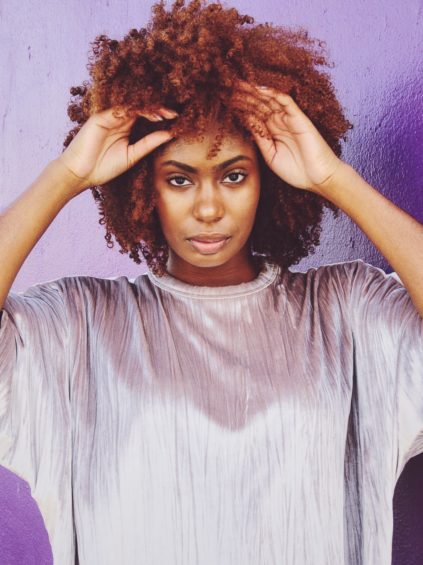
CRISTINA JEROME
Founder of The RnBae Collective
The RnBae Collective is an event group based in Miami that
contributes to an untapped R&B scene, bringing a fresh vibe to its city.
Cristina has worked for YesJulz agency and Slip N Slide records,
now she’s a freelance writer, a PR agent, the founder of RnBae with
1,200 tickets sold and over 30 artists booked only this year,
a monthly showcase and a bi-weekly radio show.
And she’s only 25.
Federica. Tell us a bit about your background and RnBae Collective.
How did you get where you are now?
Cristina. At RnBae Collective I don’t really have a job title because I dabble in
about everything, but I call myself “HBIC” (Head Bitch In Charge).
RnBae Collective stems from me working pro-bono as a PR agent for a Miami
based artist, Aleicia Nicole. This girl is crazy talented, but when it came to performances
there was no scene for R&B in Miami. None. I thought, why not produce my own show?
Why not starting a lane for these artists, but most importantly give them a platform.
So from there, the first, extremely tiny showcase was born in an old dance studio
with about 60-70 attendees and I haven’t looked back since. We’ve grown to over
200 attendees per show, booked over 40 artists, 15 DJs and over 2,300 attendees overall.
Federica. When did you find out you wanted to work in the music industry?
Cristina. Well, I went to school for Mass Communication and Journalism. I wanted to
be a News Reporter SO BAD! You couldn’t tell me anything boy… Until i sat down in front of our mock TV news desk in my senior year class and froze on camera.
Yeah, not for me. At all.
I saw a flyer around campus looking for radio hosts for the campus radio station, applied
and felt a lot more comfortable talking to myself inside a booth, playing my favourite songs
with my two roommates.Then, I knew music was the route I wanted to take.
Federica. Describes your project in 3 words.
Cristina. Sexy. Sultry. Sensual!
Federica. “Where bae comes to vibe”. Love the motto! Can you describe the atmosphere on your dance floor? How should r’n’b make a young women feel?
Cristina. Imagine a purple rose petal covered dance floor. The room is packed, but you can still move around and keep your eyes on who’s in the room. The music? Your favorite R&B track. Your homeboys? They are telling you to go talk to her. Your drink? A little stronger than usual, but it’s giving you the courage to go talk to “bae.” The DJ switches the song, she accidentally bumps into you, but its a perfect timing to make your move. R&B should make women feel comfortable. There’s explicit songs like Pretty Ricky’s Hotline and more
subtle songs like Aayliah’s Rock The Boat, but both should make you comfortable in
your own skin.
Federica. What were the difficulties you encountered when opening
your own business?
Cristina. Pretty much everything! I believe budgeting and spending money on the right
things was the most difficult. There was a time I felt that I needed everything at once
to make my brand great when in reality, it would only make me broke. I was putting my
last $5 into my brand and having no problem doing it as it was mine, but I could have a
been a bit smarter in the beginning and saved a ton of money to go into other things.
Federica. As an independent female owner, what advice would you share
with every girl interested in starting their own business?
Cristina. No human being, man or woman, will stand in the way of your destiny to win.
Federica. How important is it to support each other among young entrepreneurs? Do you support and are supported by other business girls?
Cristina. Its beyond important! You have so much to learn from other people and you’re not even aware. Go check out other people in your field. See what they are doing and introduce yourself. 9/10 if they are senior, they have had the same problems you’ve had and the past.
Lastly, support is needed. Community support is the most genuine kind. When we realise
that it’s not a competition, the force of the women is stronger.
Portrait by Marcia Tucker
Styling by The Wired Heart.
Meet Cristina here and discover RnBae here.
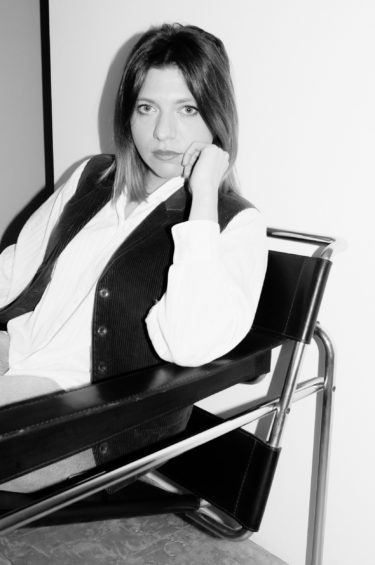
CECILIA NOSTRO
Friendz Co-founder
A degree in Economy, a master in Business Administration, her own start-up and a special place in the top 100 most influential women in Digital in Italy.
Cecilia is the co-founder of Friendz, one of the most downloaded apps in
the country. With more than 200k users only in Italy, only last year Friendz had more than 2 million euros turnover. Available in Spain since November 2017,
this year the app will arrive also in London, Paris and probably Germany.
Ah, and they are launching their Cryptovaluta.
Cecilia is 27 FYI.
Federica. To begin with, tell us a bit about Friendz. How does it work?
Cecilia.Friendz is an app that allows big companies to communicate on social networks through common people’s creativity. It works this way: we have a community of 200k people using our app on a daily basis. We launch inputs to these users asking them to do pictures following certain criterions which change all the time. They successively upload the picture on our app and if the image respects the brief our staff will approve it and post it on the social profiles of who sent it to us. When the users become particularly good at it we put no restraints to their imaginations and allow them to use their creativity for the company we work for. The users gain credits when they take a picture for Friendz which automatically converts into a giftcard. We basically found a way to make people have fun and earn something in the mean time, and from the other side we created a new marketing channel for companies which are always looking for innovative ways to convey their message on social platforms in a genuine and detailed way! It has been two years now from Friendz launch and we receive more than 350k pictures a month and we collaborated with more than 200 companies.
Federica. When did you find out you wanted to be an entrepreneur
in the hi-tech world?
Cecilia. I think I never wanted to be an entrepreneur, especially in the hi-tech world! After four days I started my job for a multinational corporation I realised that I couldn’t continue much longer working for someone telling me what to do. People who know me always say that I’m particularly lucky in general. I don’t know if this is true or not but that time I met my partners I got really really lucky! They are two engineers while I’m just a “nobody”, but this wasn’t an actual issue. We understood each other perfectly from the first moment and we have a lot of passion for what we do – we also became really good friends which is always a plus.
The moment when I actually realised I desired to become an entrepreneur was at the beginning of this experience, when everything was still really hard. We didn’t have money to get a coffee and nobody believed in us. But the energy we had and that sparkle you could see in our eyes were enough to make us climb the highest mountains. There I realised, my life wouldn’t be possible without that kind of adrenaline!
Federica. Describes your start-up in 3 words.
Cecilia. Irreverent, bubbly, useful.
Federica. Is our government open to support new talents?
Cecilia. Despite everyone says that there are no concrete opportunities in this country we actually found many. In terms of investments, resources and ecosystem. Clearly the fact
that there is less money means that the projects which get some attentions are few, only the most valuable ones.
Federica. How did you find your Business Angel?
Cecilia. We reached our first 90k users thanks to a business angel, one of the persons we
met when we started knocking the first doors. He is an entrepreneur coming from a completely different field and knowing little about marketing and social medias. I remember that the day he decided to sign the contract he told us: “I invest in you because I believe in what you do, even if I didn’t completely get it..! I believe that Friendz, with your determination and attitude, will bring you somewhere and I want to be there to enjoy the show!”. At that point we
couldn’t disappoint him anymore, he believed in the business but he basically bet on us as
human beings, as a team and in the way we work. This kind of awareness always keeps
us loaded!
Federica. As a young entrepreneur, what were the difficulties you
encountered when opening your own business?
Cecilia. The difficulties in being young entrepreneurs are enormous, sometimes they even seem insuperable. The trick is trying not to see them as such. We call every problem challenge, every failure formation and when every fight is over we understand we have a very strong and long lasting bound. What really makes the difference, according to me, it’s the attitude you have when approaching the world, not the amount of traps you may find on your way.
Federica. You and your partners do not read curriculum or regular interviews with your future collaborators. You organise parties and escape rooms instead and your innovation start- up gives work to 35 people with an average age of 24.
Which gear do you have more than other big companies?
Cecilia. The perfect people to join our team do not have specific characteristics. They just have to naturally become part of our mechanism. With experience and determination everybody gets better, growing and learning from mistakes and consequently performing better. All the young persons working with us share more or less the same way of seeing life that we have and
therefore the same work approach.
Federica. What does innovation mean to you?
Cecilia. Innovation not directly connected to the final result is an attitude. It’s a way of approaching life. It is part of the ability to see the world disregarding cultural conditionings.
I think it starts from the “vice” of always having your own opinion, about anything,
despite everything.
Portrait by Alessio Costantino.
Meet Cecilia here and discover her app here.
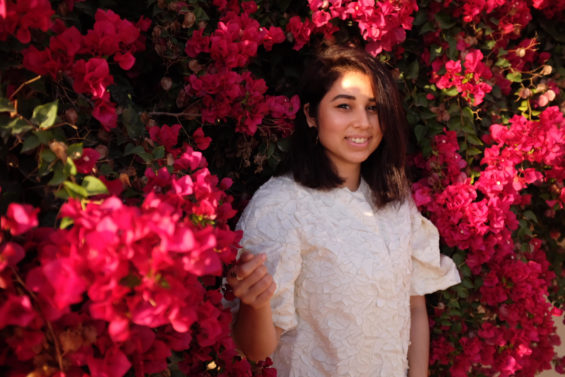
SARA BIN SAFWAN
Founder and Curator of Banat Collective
Banat Collective is a creative platform that showcases art of all kinds while also opening up the discussion about womanhood in MENA. Currently, they have a book being made titled “In the Middle of it All” based on themes related to “coming of age”, where they are showcasing works from more than 30 artists, poets and writers. They also use their online presence to support emerging artists and to connect creatives together in hopes of fostering community and collaboration. They recently did their first panel discussion at Abu Dhabi Art 2017, discussing the lack of independent creative communities in the GCC.
Sara Bin Safwan has a bachelor degree in Culture, Criticism & Curation at
Central Saint Martins College of Art and Design and she also work as
researcher for the Guggenheim Abu Dhabi museum.
Can you believe she’s only 24? We do.
Federica. Hi Sara, how did you get where you are now?
Sara. I think I started my first art blog at the age of 14 on Blogspot. I would find artists on the internet and try and write about them in order to practice my critical analysis skills and broaden my knowledge of contemporary art. Many new and different blogs have followed since and my persistent interest in writing and art brought me to the point where I came up with the idea of Banat Collective. I started the Collective as a reaction to the lack of small-scale art
initiatives in the UAE. Our government is in fairness doing a great job in bringing in the big
names and starting museums and very recently trying to support emerging artists however, it can still be quite intimidating for newcomers. Banat Collective is really a response to the need
for more accommodating spaces for grass-root movements to grow. After living in London for
so long, I grew apart from the UAE and a desire to reconnect with my country and culture
personally inspired me to start Banat. I took the independent, DIY spirit that I had fallen in love
with while living in London and applied it to a project in the UAE. So I set up the website and
social media accounts, connected with a few amazing creatives some of whom I have become
good friends with and together we have managed to create something new and successful.
Federica. When did you find out you wanted to be an art curator and a researcher?
Sara. I started as a Fine Art foundation student at Central Saint Martins in 2011. The pressures of moving from Abu Dhabi to London weighed immensely on me. A series of sequences leading up to the first year were difficult and I was left unprepared to take on my
new life in London. I struggled to find my voice as an artist amongst the hundreds of other kids
who wanted to be artists as well. Halfway through the year came the time to start enrolling for
you bachelors when our class tutor mentioned that there’s a new course focused on writing, art
history and something that I had never heard of before – Curation. When I went to the course
orientation, I fell in love with what it had to offer. I had always wrote and read a lot since my
childhood so it really spoke to me that a course was pretty much dedicated to that and just
focused on art. Curation sort of fell into my lap and I am very thankful that it did. It was a way
that I could still be involved with art and constantly learn new things.
Federica. What was your most important goal?
Sara. I believe there is still a long way to go until I get to where I want to be. I know we
are only scratching the surface and there’s a lot more to come. The goal for me was to finish
something I had started. Amongst my many failed art projects and blogs – this one stuck.
It’s amazingly satisfying to try and stick to something and then see it grow on its own.
Federica. Describes your project in 3 words.
Sara. Community. Intersectionality. Passion.
Federica. Why did you feel the need to found Banat Collective? Is your government open to supporting new talents?
Sara. The government is supportive of new talent and has many programs and
initiatives designed to improve and expand the support. Banat Collective was founded from
a need for a more independent and unregulated art community, to open the doors to anyone who wants to contribute, collaborate and create things. It is a way for many different artists
from different regions to connect together share ideas. There cannot be only one way of bringing people together and I believe that combining alternative communities like Banat Collective with initiatives like those that the government has developed, can help create a diverse art scene.
Federica. You have lived in London for several years. Why did you feel the
need to go back to your country and open your own project there?
Sara. The UAE is still trying to find its feet in the art world and it was an attractive and great
opportunity to be part of the country’s growing art scene. I enjoyed the creative freedom that I had in London, which is still slightly lacking in Abu Dhabi but the UAE is currently going through an incredible growth of arts and culture and I am very grateful to be a part of the beginnings of a flourishing art scene in the UAE.
Federica, What were the difficulties you encountered when opening your
own business?
Sara. Starting your own project by yourself is very difficult. Banat Collective is my second
job so I have to manage my time efficiently. I found it difficult to manage a full time job,
Banat and my life all at the same time. However now, I have found an amazing team that
help me with the workload and are as committed and talented as you could hope for. I have
to note that we are not a business we have no intention of taking out any money made by
the Collective, all revenue is directly put back into the project.
Federica. Being a young and creative women and working in the UAE. What does it mean?
Sara. It is amazing to be a working woman in the UAE today. I have never experienced
professionally any difficulties because of my gender and can truly say that makes me proud
to be Emirati. The majority of the creative industry is run by successful, smart women who
are passionate about what the do.
Federica. What extra gear should a young creative women have today who wants to start her own project?
Sara. Passion, motivation and commitment. I think it is important not to forget why you are
doing what you are doing. After that, everything will fall in to place. The internet is also a great
tool to use in order to connect with people and create great content.
Federica. As an independent female owner, what advice would you share with every girl interested in starting their own business?
Sara. Do not be afraid to reach out to people and ask for help. I used to be nervous about
meeting people and asking if they would like to be involved in the project. At the end of the day,
being surrounded by a supportive community will help you get to your goals much quicker and
help you develop your ideas.
Self Portrait of Sara Bin Safwan
Meet Sara and Banat Collective here and here.
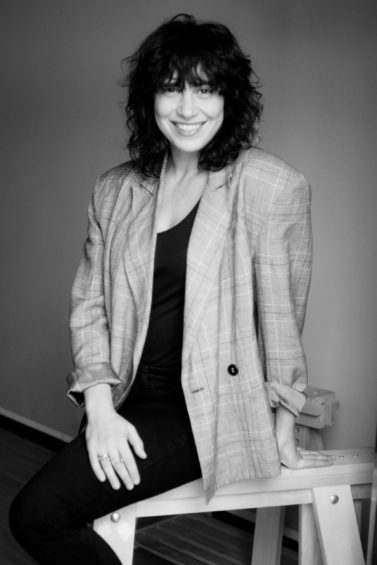
CECILIA BELTRAMI
La Parrocchiale
Born in 1985, with two degrees in her pockets, sommelier and label designer. Cecilia is a young enthusiast woman, determined and tough, she is the
“creative director” of the family’s wine producing company.
Federica. Hi Cecilia, what is your business about?
Cecilia. I always say that I was born in a jug 🙂 Our family business produces wine since
my grand grandpa’s times and I always lived in the open air between our vineyards in the
Oltre Po Pavese area, in the north of Italy. I have two degrees that theoretically had nothing to do with the enology world, even if they helped me later on to help with our business. I am a sommelier and I handle clients and distributors, coming mostly from outside of Italy; in
the meantime I also curate the graphical and creative part working on our labels.
Federica. When did you find out you wanted to produce wine and be part of your family business?
Cecilia. I actually kind of imposed myself to be part of this. My parents have always taught
me so much about the family business but they were pushing me towards different experiences,
letting me free of making my choice without feeling forced. That’s why I followed different studies directions (I got two degrees, one in design and communication and the other in communication’s design) and I started my working life in different fields. My love for wine
still stayed the same and it was so strong that I finally decided to invest everything I learned before and use it to create something innovative for my own business. The job I’m doing in my firm is directed to add a modernity twist allowing me to totally integrate and work in a certain way within my company. At the moment we have a production of 250.000 bottles which, in the
majority of cases, come from the north of Italy, something sounding a bit ’80s old fashioned to
me, since it is based on my dad’s clientele he created in 20 or 30 years with privates, wine shops
and farmsteads’ restaurants. I’m trying really hard to work also with foreign countries and I just
started with Antwerp and Amsterdam, so mainly Belgium and Netherlands . I did several fairs
and I was in touch with a Belgian distributor, now I have a new society importing all my wines
there. With the Netherlands I’m working more from the creative point of view.
I met Geoffrey Lillemon in Amsterdam, he is an american artist who moved to Europe 7
years ago. He is an augmented reality expert and he created set designs for Beyoncè and Miley Cyrus. He is a genius and lucky me, he loves wine! After our first meeting we decided to start a collaboration to have special limited editions labels. We realised two of them until now! But we
will surely continue to work together.
Federica. What has been the biggest goal you achieved until now ?
Cecilia. Surely the possibility to create a network abroad, allowing me to export my wine and
start atypical collaborations which are absolutely something positive for our company. I did all
of this with my own strengths and not using my family’s contacts.
Federica. Describe your wine in three words.
Cecilia. I will use an adjective for each of my three favourite wines from our wine cellar.
– Rose?: sexy
– Cabernet: fascinating
– White chardonnay: fresh and… explosive!
Federica. What does beauty mean to you?
Cecilia. Beauty to me it’s always about intensity and simplicity.
Federica. Which were the difficulties you had to face when you decided to work
for your own family’s business and start this path? Which were the positive sides
and the changes you suggested/generated to your own business when you
started being actively part of it?
Cecilia. The most difficult client I had in my whole life is my dad, especially when I had to design new labels for him! I wanted to bring some freshness but it wasn’t an easy experience.
I did so many printing trials and went on more than an year with my proposals! I feel very joyful about sharing my work with my family and spend my time with them, satisfactions
are many…
Federica. What extra gear should a young creative woman entrepreneur
have today?
Cecilia. Be multitasking, don’t be scared to do it, and be on the right trail.
Federica. Which advice will you give to all young women who wish to undertake the same path in the enology world?
Cecilia. Taste as much as you can! And be opened to everything. Nowadays being ready and know as many things as you can is fundamental. The wine is not just wine per se, but it’s really about everything behind: from communication to design, laws in the country you’re producing in and in the one your exporting for and many other things.
Portrait by Alessio Costantino.
Meet Cecilia here and discover her wine here.
Words by Federica Ciuci Priori
Translation by Amanda Luna Ballerini
